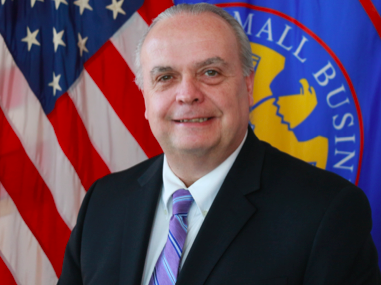 by Steve Bulger
by Steve Bulger
U.S. Small Business Administration’s Atlantic Regional Administrator overseeing agency operations in New York & New Jersey, Puerto Rico and U.S. Virgin Islands.
President Donald Trump’s support of small business – the acknowledged back-bone of our nation’s thriving economy — was clearly evident when the President signed the Setting Every Community Up for Retirement Security (SECURE) Act in the closing days of 2019. This bi-partisan measure, which became law with the President’s signature, will benefit every working American saving for retirement while, most significantly, also provide small business owners and their employees with vital new tools designed to level the retirement planning playing field and close the retirement gap for the approximately half of our nation’s workforce engaged in or employed by a small business.
With record low unemployment making it difficult for small businesses to recruit and retain top talent, small business job openings are at a record high. The SECURE Act will make a career in small business more attractive by opening access to a wide range of retirement programs currently foreclosed to those working in the small business sector.
The centerpiece of the SECURE Act — Open Multiple Employer Plans – will now allow small businesses to pool their resources to offer a retirement plan to workers that is cost effective and simpler to administer.
According to Bureau of Labor Statistics, about half of small business employees do not have access to the same quality work-based retirement plans as workers at large employers. For example, in 2017, only 53% of workers at private-sector establishments with fewer than 100 employees were offered a retirement plan (versus 89% of workers at mid- and large-sized firms).
By signing the SECURE Act into law, President Trump has acted decisively to eliminate this disparity by making it easier for small firms to provide economic security in retirement to their workers, and concomitantly, better position small businesses to recruit and retain the skilled workforce that is an indispensable key to success in today’s fast changing economy.
Small business owners face economic pressures and challenges that can make offering competitive benefits difficult. A recent Pew Charitable Trusts survey isolates prohibitive cost as the primary reason that small businesses do not offer retirement benefits to their employees. The SECURE Act makes it easier for small business owners to set up retirement plans that are less expensive to operate and easier to administer.
Moreover, small businesses are now eligible for a tax credit for creating a retirement plan for employees’ participation. Anyone working at least 1,000 hours in a year (about 20 hours per week), or three consecutive years of at least 500 hours, will be able to participate under the law.
Americans are working longer than ever before, many because longer life expectancies have rendered their retirement savings inadequate to maintaining a comfortable quality of life into their eighties or beyond. While 47.5% of the private workforce is employed by a small business, a chasm exists between the retirement savings options available to these workers when compared to the opportunities that exist for those employed by their larger counterparts in corporate America.
In the midst of the economic boom fostered by President Trump’s taxpayer friendly, job creating policies there has never been a better time to provide small business employees with greater access to workplace retirement saving plans that will protect their future financial well-being.

You must be logged in to post a comment Login